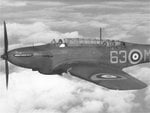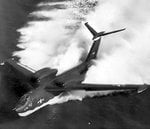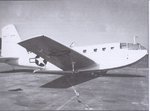B-17engineer
Colonel
I have a book that goes through the worst aircraft in history. I'll post some now and again....
What I write is from the book and I may not necessarily have the same opinion, neither will you guys....
Starting off with
Fairey Battle
"The Light Bomber that was too Heavy"
Specifications
Crew: 3
Powerplant: On 768kw (1030HP) Rolls Royce Merlin IV-12 Piston engine
Max Speed: 217mph (414 KM/H)
Span: 54ft
Length: 42ft 4in
Height: 15 ft 6 in
Weight: Maximum 10,792lbs.
"Designed in 1932-33, the Battle, with its metal skin and streamlined monoplane layout, was the height of modernity when it appeared in 1936, but by the outbreak of the war was too unmanoeuvrable and slow to avoid modern fighter and too lightly armed to cause much damage. On May 10th 1940 the Battles were thrown into action against the German advance into the Low Countries, making the low-level raids against convoys, troops and bridges. All attacking aircraft were shot down or damaged on the first day. An attack on the bridges over the Albert Canal resulted in total losses and the awarding of two (posthumous) Victoria Crosses. Belgium's small force of Battles was expended in the same attack. Battles were soon relegated to such roles as target tugs and with a particularly ugly two-cockpit version, training.
The Fairy Battle was the product of an erroneous prewar policy that envisaged the light bomber as an effective means of ground support. Later, combat experience- particularly in North Africa resulted in the development of the fighter-bomber as the primary means of tactical support."
What I write is from the book and I may not necessarily have the same opinion, neither will you guys....
Starting off with
Fairey Battle
"The Light Bomber that was too Heavy"
Specifications
Crew: 3
Powerplant: On 768kw (1030HP) Rolls Royce Merlin IV-12 Piston engine
Max Speed: 217mph (414 KM/H)
Span: 54ft
Length: 42ft 4in
Height: 15 ft 6 in
Weight: Maximum 10,792lbs.
"Designed in 1932-33, the Battle, with its metal skin and streamlined monoplane layout, was the height of modernity when it appeared in 1936, but by the outbreak of the war was too unmanoeuvrable and slow to avoid modern fighter and too lightly armed to cause much damage. On May 10th 1940 the Battles were thrown into action against the German advance into the Low Countries, making the low-level raids against convoys, troops and bridges. All attacking aircraft were shot down or damaged on the first day. An attack on the bridges over the Albert Canal resulted in total losses and the awarding of two (posthumous) Victoria Crosses. Belgium's small force of Battles was expended in the same attack. Battles were soon relegated to such roles as target tugs and with a particularly ugly two-cockpit version, training.
The Fairy Battle was the product of an erroneous prewar policy that envisaged the light bomber as an effective means of ground support. Later, combat experience- particularly in North Africa resulted in the development of the fighter-bomber as the primary means of tactical support."










